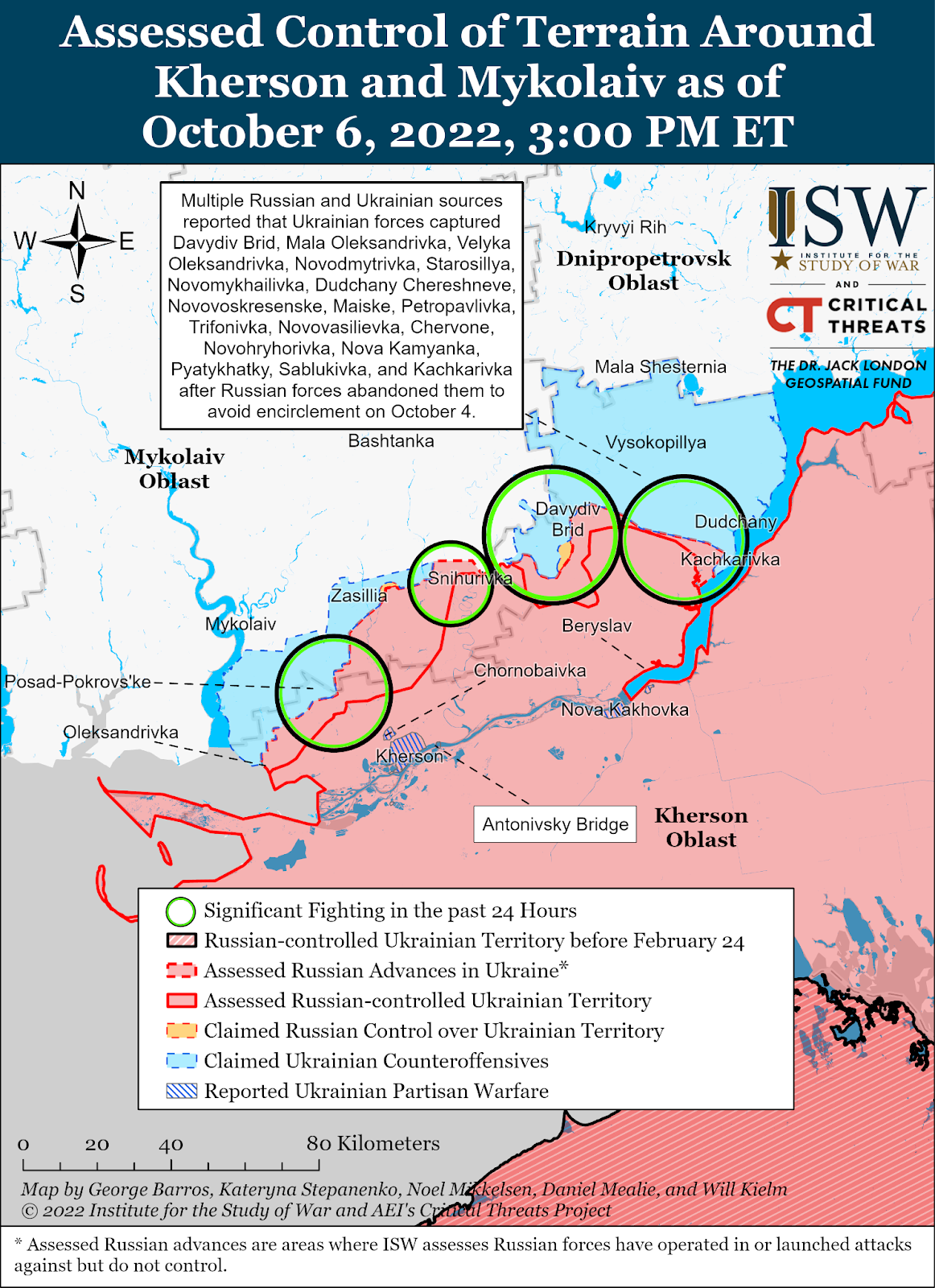Ukrainian Troops Close To Liberating Kherson in Southern Offensive
A Russian armored vehicle parked near a government office in Kherson City, July 2022. Photo: Reuters/Alexander Ermochenko
In the first week of October, Ukrainian troops made significant advancements in their counteroffensive in the Kherson Oblast. Beginning in late August, alongside the operation in the Kharkiv Oblast, the southern counteroffensive’s initial goal has focused on securing the two crossings across the Dnipro River and liberating the city of Kherson.
Located at the mouth of the Dnipro and Inhulets Rivers, Kherson is a major port city and a strategic position for securing access to the southeastern regions of Ukraine. It was seized by Russian troops within days of the invasion, beginning in late February 2022.
The key targets were the Antonovskyi Bridge and the Kahkovka Hydroelectric Station—the only river crossings south of Zaporizhzhia. Controlling these crossings has given Russia a strategic advantage in protecting Kherson, and by extension, Crimea, from liberation.
However, since the counteroffensive began on Aug. 29, Ukraine continues to exploit Russia’s strategically vulnerable positions on the western bank of the Dnipro River. Given the Russian exposure on the eastern bank of the river, Ukrainian troops are attempting to replicate their success at the liberation of Kharkiv.
As confirmed by Ukrainian leadership, their troops have since liberated multiple villages on the approach along the river. The next phase of the operation - as Ukrainian troops regroup and consolidate positions in towns within 25km of the city center - will involve the liberation of the city of Kherson itself.
Using American HIMARS artillery systems, Ukraine has since impaired the utility of the crossings, threatening the potential retreat of Russian troops. Military advisors speaking with the Kyiv Independent have stated that holding the western bank of the river is no longer tenable. However, Russian troops likely face political pressure to remain in the city.
The liberation of Kherson city would likely be one of the first real tests of Russian President Vladimir Putin’s claim to the four oblasts he seeks to annex: Donetsk, Luhansk, Kherson, and Zaporizhzhia.
While Putin claims these territories under the guise of internationally condemned referenda, the Russian President faces a situation on the battlefield that threatens to subvert his practical ability to follow through with the annexation. Now that Kherson City is under threat, Putin finds himself under a political urgency to go forward and convincingly annex the province. Otherwise, he risks potentially losing control of it, rendering his attempts moot.
Kremlin spokesman Dmitry Peskov acknowledged this predicament, saying to Reuters that “there is no contradiction” between the losses on the southern front and the execution of Putin’s Pan-Slavic irredentist vision.
This political pressure to maintain control of the regional capital of Kherson leaves the Russian troops in a precarious position. While Phillips O’Brien, a professor of strategic studies at St. Andrew’s, says that the strategically rational choice would be to regroup and hold the defensive line from the eastern bank of the Dnipro, the political will of the Kremlin troops the soldiers on the ground to maintain de jure control at a high cost.
With momentum on the side of the Ukrainians, Russian troops have been reportedly anxious to regroup and avoid a route. The Institute for the Study of War has noted that lines are so thin that some villages have as little as 15 soldiers defending them.
In response to this vulnerability, the Russian command has attempted to “push the frontline further north of Kherson City to afford Russian troops a wider buffer zone between Ukrainian positions and critical concentration areas near the Dnipro River.”


